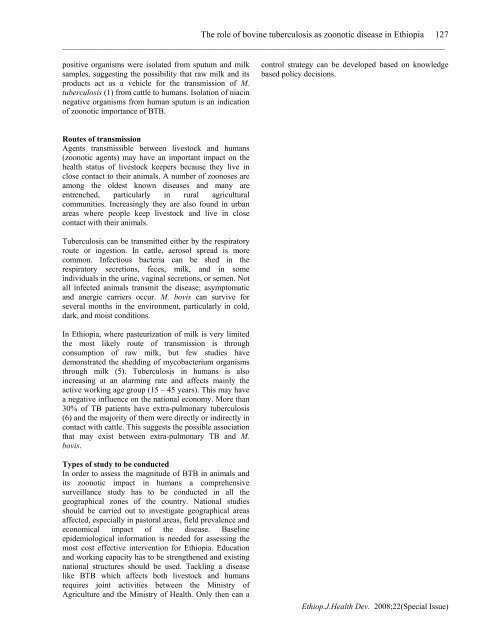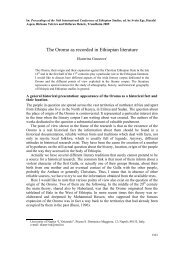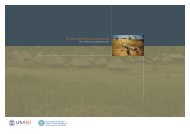Create successful ePaper yourself
Turn your PDF publications into a flip-book with our unique Google optimized e-Paper software.
The role of bovine tuberculosis as zoonotic disease in Ethiopia 127<br />
______________________________________________________________________________________<br />
positive organisms were isolated from sputum and milk<br />
samples, suggesting the possibility that raw milk and its<br />
products act as a vehicle for the transmission of M.<br />
tuberculosis (1) from cattle to humans. Isolation of niacin<br />
negative organisms from human sputum is an indication<br />
of zoonotic importance of BTB.<br />
Routes of transmission<br />
Agents transmissible between livestock and humans<br />
(zoonotic agents) may have an important impact on the<br />
health status of livestock keepers because they live in<br />
close contact to their animals. A number of zoonoses are<br />
among the oldest known diseases and many are<br />
entrenched, particularly in rural agricultural<br />
communities. Increasingly they are also found in urban<br />
areas where people keep livestock and live in close<br />
contact with their animals.<br />
Tuberculosis can be transmitted either by the respiratory<br />
route or ingestion. In cattle, aerosol spread is more<br />
common. Infectious bacteria can be shed in the<br />
respiratory secretions, feces, milk, and in some<br />
individuals in the urine, vaginal secretions, or semen. Not<br />
all infected animals transmit the disease; asymptomatic<br />
and anergic carriers occur. M. bovis can survive for<br />
several months in the environment, particularly in cold,<br />
dark, and moist conditions.<br />
In Ethiopia, where pasteurization of milk is very limited<br />
the most likely route of transmission is through<br />
consumption of raw milk, but few studies have<br />
demonstrated the shedding of mycobacterium organisms<br />
through milk (5). Tuberculosis in humans is also<br />
increasing at an alarming rate and affects mainly the<br />
active working age group (15 – 45 years). This may have<br />
a negative influence on the national economy. More than<br />
30% of TB patients have extra-pulmonary tuberculosis<br />
(6) and the majority of them were directly or indirectly in<br />
contact with cattle. This suggests the possible association<br />
that may exist between extra-pulmonary TB and M.<br />
bovis.<br />
Types of study to be conducted<br />
In order to assess the magnitude of BTB in animals and<br />
its zoonotic impact in humans a comprehensive<br />
surveillance study has to be conducted in all the<br />
geographical zones of the country. National studies<br />
should be carried out to investigate geographical areas<br />
affected, e<strong>special</strong>ly in pastoral areas, field prevalence and<br />
economical impact of the disease. Baseline<br />
epidemiological information is needed for assessing the<br />
most cost effective intervention for Ethiopia. Education<br />
and working capacity has to be strengthened and existing<br />
national structures should be used. Tackling a disease<br />
like BTB which affects both livestock and humans<br />
requires joint activities between the Ministry of<br />
Agriculture and the Ministry of Health. Only then can a<br />
control strategy can be developed based on knowledge<br />
based policy decisions.<br />
Ethiop.J.Health Dev. <strong>2008</strong>;22(Special Issue)







